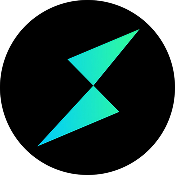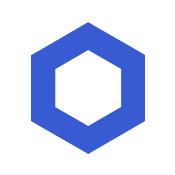Navigating the complex landscape of decentralized finance requires a clear understanding of how different protocols facilitate cross-chain interactions and data integrations. Thorchain and Chainlink stand out as two pivotal players, each offering unique solutions to interoperability and liquidity challenges within the crypto ecosystem. This comparison delves into their core architectures, functionalities, and ideal use cases, equipping crypto enthusiasts and investors with insights to evaluate which protocol aligns best with their strategic goals.
Short on time? Jump to Thorchain vs Chainlink Comparison
Understanding Thorchain and Chainlink ?
Thorchain is a Layer-1 blockchain built on the Cosmos SDK, designed specifically to enable seamless cross-chain decentralized exchanges (DEXs) without wrapped assets. Its architecture employs BFT Tendermint consensus and maintains onchain vaults secured by RUNE staking and bonding, ensuring robust security and decentralization. Thorchain's key innovation lies in its continuous liquidity pools paired with RUNE, which provide liquidity across multiple assets, supporting decentralized swaps without relying on centralized intermediaries.
Chainlink, on the other hand, functions as a decentralized oracle network that connects smart contracts with real-world data. It acts as a bridge, delivering accurate off-chain information to on-chain applications, thus enabling complex DeFi protocols, asset tokenization, and automated financial instruments. Chainlink’s architecture involves a network of oracles that aggregate, validate, and deliver data securely, with a focus on scalability, privacy, and cross-chain interoperability via protocols like CCIP.
While Thorchain’s primary goal is to facilitate cross-chain liquidity and swaps directly on the blockchain level, Chainlink emphasizes secure data feeds and cross-chain communication for a broad spectrum of decentralized applications. Their differing focuses—liquidity provisioning versus data integrity—highlight their complementary roles within the decentralized finance ecosystem.
Both protocols have undergone significant upgrades recently. Thorchain launched V3, introducing a deflationary RUNE model, Cosmos SDK v50 integration, and smart contract capabilities through CosmWasm. Chainlink, meanwhile, continues expanding its oracle services, with new privacy features, cross-chain interoperability protocols, and support for tokenized assets, reinforcing its position as the backbone of onchain data and cross-chain connectivity.
Key Differences Between Thorchain and Chainlink
Core Functionality
- Thorchain: Thorchain is primarily focused on enabling decentralized cross-chain asset swaps and maintaining liquidity pools across different blockchains, effectively functioning as a decentralized liquidity router. Its architecture allows users to swap assets directly between blockchains without wrapping or intermediaries, making it a true cross-chain DEX network.
- Chainlink: Chainlink specializes in providing secure, reliable off-chain data to smart contracts through its decentralized oracle network. It acts as a data intermediary, ensuring that external information such as prices, events, and real-world data can be integrated into onchain applications with high integrity and security.
Architectural Design
- Thorchain: Built on the Cosmos SDK, Thorchain employs BFT Tendermint consensus and uses vaults secured by RUNE staking. Its architecture emphasizes liquidity pools, continuous asset swaps, and onchain security mechanisms like TSS for fund movement, designed for high throughput and resilience in cross-chain operations.
- Chainlink: Chainlink’s architecture involves a network of decentralized oracles that fetch, validate, and aggregate data from multiple off-chain sources. It supports cross-chain communication through protocols like CCIP, enabling interoperable data transfer across different blockchains, with a focus on scalability, privacy, and security.
Use Cases
- Thorchain: Thorchain’s primary use case is enabling decentralized cross-chain swaps and liquidity provisioning, supporting DeFi activities like yield farming, liquidity pools, and cross-chain trading without wrapped assets.
- Chainlink: Chainlink powers a wide range of applications—from decentralized price feeds for DeFi protocols to secure data inputs for insurance, gaming, and asset tokenization—making it a foundational layer for a broad spectrum of onchain services.
Tokenomics and Incentives
- Thorchain: RUNE token plays a central role in securing the network, providing liquidity, and participating in governance. Recent upgrades introduced a burn mechanism to reduce supply, aiming to support long-term value appreciation and network security.
- Chainlink: Chainlink’s LINK token incentivizes node operators who provide oracle services. Chainlink also supports staking mechanisms in some implementations, promoting data integrity and network reliability across its oracle network.
Interoperability Approach
- Thorchain: Thorchain achieves interoperability through its native cross-chain liquidity pools, enabling users to swap between assets directly across different blockchains without wrapping.
- Chainlink: Chainlink employs protocols like CCIP and supports cross-chain data transfer, allowing smart contracts on different chains to securely communicate and share data, facilitating multi-chain decentralized applications.
Thorchain vs Chainlink Comparison
| Feature | ✅ Thorchain | ✅ Chainlink |
|---|---|---|
| Primary Function | Decentralized cross-chain liquidity pools and swaps | Secure off-chain data feeds and cross-chain communication |
| Consensus Mechanism | BFT Tendermint with onchain vaults and TSS | Decentralized oracle network with aggregation protocols |
| Main Use Cases | Cross-chain asset swaps, liquidity provisioning | Data provision for DeFi, asset tokenization, cross-chain interoperability |
| Token Role | RUNE secures the network and incentivizes liquidity | LINK incentivizes oracle providers and secures data feeds |
| Interoperability Method | Native cross-chain pools, no wrapping needed | Protocols like CCIP for cross-chain data transfer |
| Recent Upgrades | V3 launch with burn mechanism, Cosmos SDK v50, smart contracts | Expansion of oracle services, privacy, and cross-chain protocols |
Ideal For
Choose Thorchain: DeFi traders and liquidity providers seeking seamless cross-chain swaps and liquidity pools.
Choose Chainlink: Developers and enterprises requiring secure, reliable off-chain data and cross-chain interoperability for complex dApps.
Conclusion: Thorchain vs Chainlink
While Thorchain and Chainlink serve distinct yet interconnected roles within the crypto ecosystem, their combined capabilities significantly enhance decentralized finance. Thorchain’s robust cross-chain liquidity pools enable decentralized swapping and asset transfer directly on the blockchain, making it ideal for traders and liquidity providers focused on seamless asset interoperability.
Conversely, Chainlink’s oracle network provides the essential data infrastructure that fuels many DeFi protocols, supporting complex automation, asset tokenization, and cross-chain communication. Its modular and scalable architecture ensures high security for off-chain data, making it indispensable for developers building multi-chain applications. Users should evaluate their priorities—whether direct cross-chain liquidity or reliable external data—to determine which protocol aligns best with their strategic objectives.






